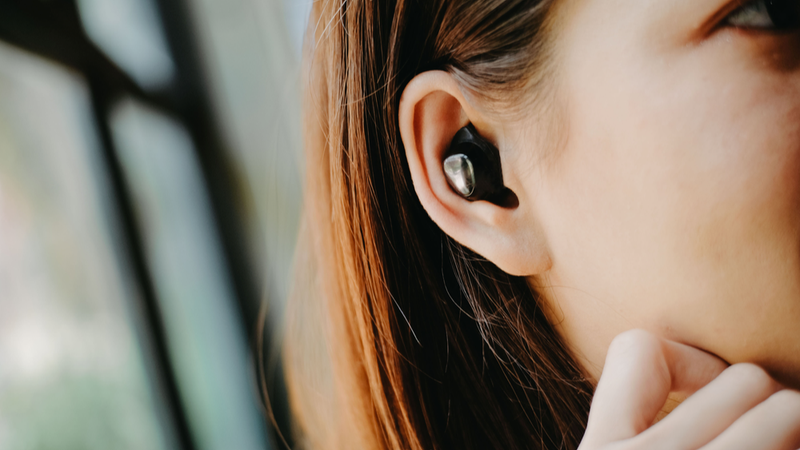LE Audio ready for developers of next-generation wireless sound products
Technology described as the ‘future of wireless sound’ allows engineers to enhance the sound quality and power consumption of wireless audio products

This article was first published on
blog.nordicsemi.comRecording technology has followed a path of increasing fidelity since the days of wax grooves on a cylinder with mechanical playback. Later those grooves were carved into vinyl and the music reproduced electrically. Then magnetic tape enhanced the quality of recorded sound from the 1940s through to the 1970s. The analogue era was then brushed aside by digital recording, using technology pioneered by Sony, which peaked with today’s CD-quality sound.
But it turns out that the relentless drive for greater sound quality might have been misplaced. It seems that beyond Hi-Fi aficionados, listeners are happy with digital sound delivered at bitrates well below those offered by CD—provided it’s done cleverly—and that’s proved a boon for wireless audio product designers.
The psychology of sound
Engineers use coder/encoders (“codecs”) to stream audio sound across a wireless link. The codecs use a compression format to squeeze the digitized music and lower the throughput required to wirelessly transmit. The compression formats help improve range and lower power consumption.
Some popular compression techniques use ‘lossy’ formats whereby before transmission, the encoder discards information considered not needed to maintain the quality of reproduction, in order to increase compression. The developers of lossy formats have been guided by psychoacoustic models which help them determine which information can be discarded. But not all psychoacoustic models are equal and otherwise equivalent compression algorithms can result in very different sound quality.
Bluetooth Audio evolves
The Bluetooth Special Interest Group (SIG) developed its own wireless streaming technology as far back as 2003. Called the Advanced Audio Distribution Profile (A2DP), the technology facilitated audio streaming between two Bluetooth devices and introduced the low complexity sub-band codec (SBC).
SBC did a reasonable job but suffered from some drawbacks. Key among these was a channel limitation that only allowed streaming audio to a single device such as the left-hand unit of a pair of earbuds. Engineers overcame the problem by processing the incoming Bluetooth audio stream in one earbud and then from there wirelessly retransmitting the second channel to the other earbud. The technique worked but was processor intensive and shortened battery life.
Now a new Bluetooth SIG codec, called the Low Complexity Communications Codec (LC3), is both addressing the drawbacks of SBC and bringing some new features of its own. LC3 forms the backbone of LE Audio, which the Bluetooth SIG describes as “the future of wireless sound”.
Through innovative compression techniques, LC3 promises improved audio quality and better battery life than SBC for all use cases. A key factor in extending battery life is that LC3 provides the same audio quality as SBC but at half the throughput. LE Audio also brings true wireless stereo (TWS) and other new functions to wireless audio including Audio Sharing.
Number crunching power
LC3 does demand more computational resource than SBC to compress and decompress the music. Previously that would threaten to erode some of the power advantage gained by the lower throughout for a given audio quality, but the new generation of wireless SoCs provide the answer. Bluetooth LE SoCs such as Nordic Semiconductor’s nRF5340 offer plenty of processing power yet at a much lower processor energy consumption than previous generations of chips.
The nRF5340 features a dedicated Arm Cortex M33 application processor, optimized for performance and with ample overhead to look after the computational demands of advanced audio codecs. The SoC incorporates a second M33 processor to supervise wireless connectivity and which is optimized for low power consumption. The result is an SoC with the ideal combination of performance and energy use to meet the demands of LE Audio.
Accelerate wireless audio development
Nordic is making it easy for developers to get started on LE Audio projects with its nRF5340 Audio DK. The DK makes it easy to embark on LE Audio projects. It is highly configurable allowing it to function as a USB dongle to send and receive high-quality audio data from a PC, a business headset, or a TWS earbud.
The Audio DK features Nordic’s nPM1100 power management IC (PMIC), and Cirrus Logic’s CS47L63 Audio digital signal processor (DSP). The PMIC features a highly efficient configurable buck regulator and an integrated battery charger and its extremely small form factor makes it ideal for space-constrained applications like TWS Earbuds. The CS47L63 is optimized for direct connection to an external headphone load and suits earbuds with mono-only and direct speaker output.
No trade-offs
LE Audio brings no technical trade-offs limiting what a designer can do. It brings better audio quality, more robust wireless connectivity and vastly improved battery life compared with Classic Audio. An engineer can, for example, design earbuds with incredible sound quality and extended battery life by designing with LE Audio. Alternatively, they can use smaller batteries to shrink the product’s form factor and direct material costs, while still matching the original product’s playtime.
And with the nRF5340 Audio DK and Nordic’s nRF5340 SoC, getting those compelling wireless audio products to market quickly is made easy.
This article was first published on Nordic's Get Connected Blog.